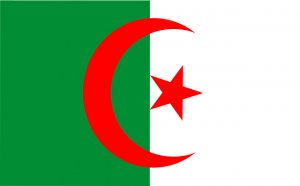 What is the WIPO MM1 form recommended by WIPO for filing international trademark applications under the Madrid Agreement? The information sheet of the WIPO website states the the WIPO MM1 form must be used for international trademark registrations which are governed exclusively by the Madrid Agreement. However, many applicants ask themselves under which circumstances the Madrid Agreement still applies? Are there any cases at all, where the MM1 form has to be used?
What is the WIPO MM1 form recommended by WIPO for filing international trademark applications under the Madrid Agreement? The information sheet of the WIPO website states the the WIPO MM1 form must be used for international trademark registrations which are governed exclusively by the Madrid Agreement. However, many applicants ask themselves under which circumstances the Madrid Agreement still applies? Are there any cases at all, where the MM1 form has to be used?
According to the Madrid System, requests for international registration of trademarks may be filed under the Madrid Agreement, or the Madrid Protocol or both, the Madrid Agreement and the Madrid Protocol. The applicable procedural regime depends on the memberships of the country of origin where the basic application was filed and the memberships of the designated countries.
A table summarizing the different scenarios and the admissible WIPO forms may be found here.
According to the information sheets, the WIPO MM1 form should be used for international applications, where
- the office of origin is the office of a contracting state which is bound by the Madrid Agreement only or
- the office of origin is the office of a contracting state which is bound by both, the Madrid Agreement and the Madrid Protocol, and where all designated contracting states are party to the Agreement but not to the Protocol.
While the two applicable cases appear quite clear from the wording, there are in fact only very rare situations where either option 1 or 2 is ever fulfilled, the reason being that only one single country has signed the Madrid Agreement but not signed the Madrid Protocol, which is Algeria (AL).
Moreover, since the filing of an international trademark registration has generally the purpose of obtaining a bundle of trademark registrations covering several jurisdictions, option 2 will almost never apply. Nobody will ever want to apply for an international registration with Algeria (AL) as the sole and only designated state. Simply filing a national trademark in Algeria would be much easier.
This leaves us with option 1: the WIPO MM1 form must be used for an international trademark registration which is based on a basic trademark deposited in Algeria. However, since Algeria has not signed the Madrid Protocol, several economically important countries which are only member of the Madrid Protocol, e.g. European Union and the United States, cannot be covered with such an international trademark registration. The additional filing of national trademark applications will be necessary in this case, reducing the motivation for any applicant to have the basic application filed in Algeria.
We do not have any information about the total number of international trademarks with an Algerian basic trademark, but we believe that the percentage of the total number of international registrations is extremely small.
Therefore, we believe that the WIPO MM1 form might be useful to applicants having a registered Algerian trademark and an economic interest in expanding their trademark protection to specific foreign countries which are also members of the Marid Agreement.

